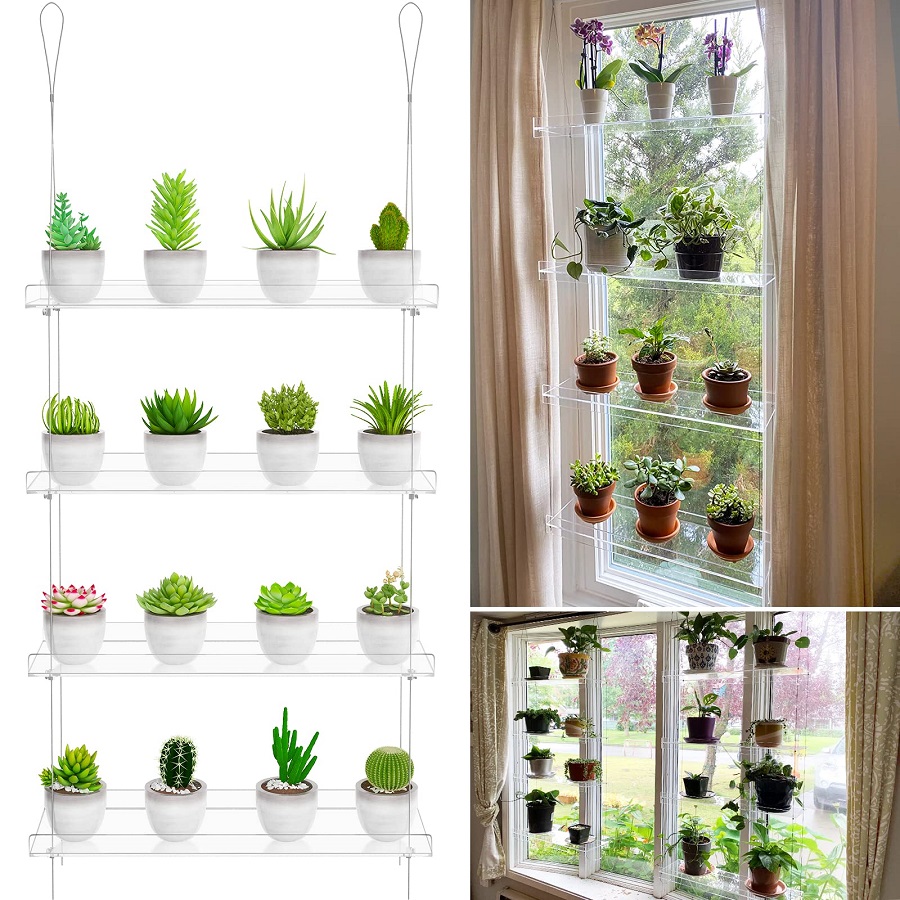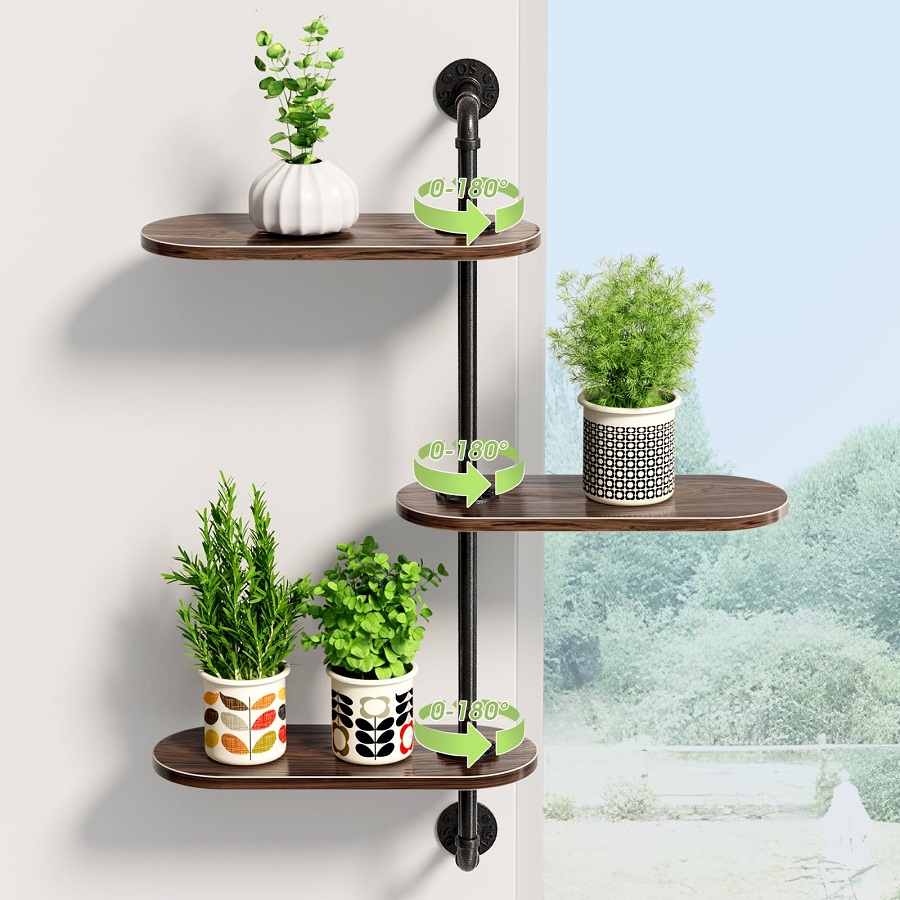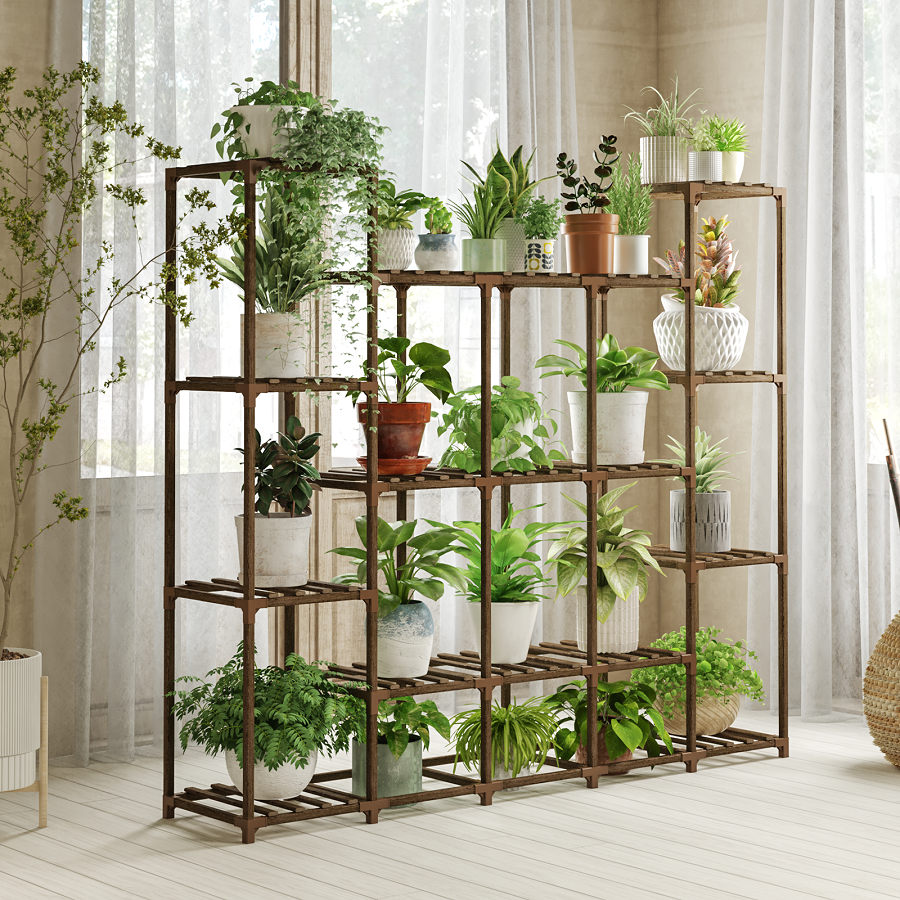Bringing greenery into your home can transform your living space, enhance your mood, and improve air quality. Shelf plants are an excellent way to incorporate nature into your decor without taking up too much space. This article will guide you through the selection and care of shelf plants, ensuring you can create a vibrant indoor garden that thrives in your home.
Why Choose Shelf Plants?
The Benefits of Indoor Plants
Indoor plants offer numerous benefits that go beyond aesthetics. They can purify the air by absorbing toxins and releasing oxygen, contributing to better indoor air quality. Studies have shown that being around plants can reduce stress, boost mood, and enhance creativity. Furthermore, plants can increase humidity, which is beneficial for skin, hair, and respiratory health. When you choose shelf plants, you are not only beautifying your space but also creating a healthier environment.
Space Efficiency
Shelf plants are ideal for small spaces or homes with limited floor area. Utilizing vertical space allows you to maximize your decor without crowding your living areas. Plants such as succulents, trailing vines, and compact varieties can thrive on shelves, window sills, or hanging planters. This versatility means you can easily integrate greenery into any room, from the kitchen to the living room, creating a lush atmosphere without sacrificing valuable space.

Selecting the Right Shelf Plants
Assessing Your Space and Light Conditions
Before selecting shelf plants, it is crucial to assess the light conditions in your home. Different plants have varying light requirements. Some thrive in bright, indirect sunlight, while others can tolerate low-light conditions. Take note of where you plan to place your plants and observe how much natural light these areas receive throughout the day. Use this information to choose plants that will flourish in those specific conditions.
Understanding Plant Types
When choosing shelf plants, familiarize yourself with the different types available. Succulents are popular for their low maintenance and unique shapes, making them perfect for sunny spots. Trailing plants, like pothos or string of hearts, add visual interest as they drape elegantly over the edges of shelves. Compact plants such as mini ferns or peace lilies can fit nicely in smaller spaces, offering lush greenery without overwhelming your decor. Understanding these categories will help you select the right plants for your home.
Popular Shelf Plants to Consider
Succulents: Drought-Resistant Wonders
Succulents are some of the most popular shelf plants due to their aesthetic appeal and minimal care requirements. They store water in their leaves, allowing them to survive in dry conditions, making them perfect for forgetful plant owners. Varieties like Echeveria, Haworthia, and Aloe Vera come in various colors and shapes, adding diversity to your plant collection. Additionally, succulents are easy to propagate, so you can expand your collection without much effort.
Pothos: The Ultimate Trailing Plant
Pothos, known for its heart-shaped leaves and trailing vines, is a favorite among indoor gardeners. This versatile plant thrives in a range of lighting conditions, from low light to bright indirect sunlight, making it suitable for various locations in your home. Pothos also purifies the air and is relatively low-maintenance. Simply water it when the top inch of soil feels dry, and you’ll enjoy a flourishing plant that adds a touch of elegance to your shelves.
Peace Lily: A Beautiful Air Purifier
The Peace Lily is not just visually stunning, with its glossy leaves and white blooms; it is also an excellent air purifier. This plant thrives in low to medium light, making it perfect for dimly lit rooms. The Peace Lily requires regular watering, but it’s essential to avoid overwatering, as this can lead to root rot. With its ability to filter harmful substances from the air, the Peace Lily is a fantastic choice for anyone looking to improve indoor air quality while enhancing their home’s aesthetic.
Essential Care Tips for Shelf Plants
Watering: Finding the Right Balance
Proper watering is crucial to keeping shelf plants healthy. Each type of plant has specific watering needs, so it’s important to understand these requirements. Overwatering is one of the most common mistakes made by plant owners and can lead to root rot. As a general rule, allow the top inch of soil to dry out before watering again. For succulents, ensure that water drains completely, as these plants prefer drier conditions. Conversely, plants like Peace Lilies may require more frequent watering to keep them hydrated.

Humidity and Temperature Needs
Most shelf plants thrive in environments with moderate humidity and stable temperatures. While many plants can adapt to average household humidity levels, some, like ferns, may require extra moisture. You can increase humidity by misting plants or placing a humidifier nearby. Additionally, keep plants away from drafts, heating vents, or air conditioning units, as sudden temperature fluctuations can stress them. Aim for a consistent temperature range of 65°F to 75°F (18°C to 24°C) for optimal growth.
Fertilizing Shelf Plants for Healthy Growth
Understanding Nutritional Needs
Fertilization is an essential aspect of plant care that is often overlooked. While shelf plants typically require less fertilizer than outdoor plants, providing them with adequate nutrients will promote healthy growth and vibrant foliage. Most indoor plants benefit from a balanced liquid fertilizer diluted to half strength every four to six weeks during the growing season (spring and summer). Always follow the manufacturer’s instructions to avoid over-fertilizing, which can harm your plants.
Choosing the Right Fertilizer
When selecting fertilizer, consider the specific needs of your plants. For example, flowering plants like Peace Lilies may benefit from a fertilizer higher in phosphorus to encourage blooming, while leafy plants like pothos may thrive on a nitrogen-rich formula. Organic fertilizers, such as compost or worm castings, are excellent choices as they provide a slow-release nutrient source that supports long-term plant health. Experiment with different fertilizers to find the best fit for your shelf plants.
Pruning and Repotting Your Shelf Plants
The Importance of Pruning
Regular pruning helps maintain the health and appearance of your shelf plants. Removing dead or yellowing leaves encourages new growth and can prevent pests and diseases from taking hold. Additionally, pruning trailing plants, like pothos, can encourage bushier growth, resulting in a fuller appearance. Use clean, sharp scissors to make precise cuts and always prune during the growing season for the best results.
When and How to Repot
Repotting is essential for keeping your shelf plants healthy, especially as they grow. Signs that a plant needs repotting include roots growing out of the drainage holes or stagnant growth. Generally, repot plants every 1 to 2 years, using a pot that is one size larger with fresh potting mix. Gently remove the plant from its current pot, loosen any tightly bound roots, and place it in the new pot. Fill in with fresh soil, water thoroughly, and allow the plant to acclimate to its new home.
Dealing with Common Pest Issues
Identifying Common Pests
Indoor plants can fall victim to a variety of pests, including aphids, spider mites, and mealybugs. Regularly inspect your shelf plants for signs of infestation, such as discolored or sticky leaves, webbing, or small insects. Early detection is crucial for effective pest management. If you notice any issues, act promptly to treat the affected plants before the problem spreads.

Creating an Aesthetic Arrangement
Choosing the Right Display
Once you’ve selected your shelf plants, think about how to arrange them for maximum impact. Consider using a variety of heights, shapes, and colors to create visual interest. Grouping plants of similar sizes together can create a cohesive look, while mixing different species can add texture and diversity. Utilize decorative pots that complement your decor style—whether modern, rustic, or bohemian—to enhance the overall aesthetic.
Incorporating Accessories
Incorporating accessories can elevate your shelf plant displays. Consider adding decorative trays, books, or art pieces to create a stylish vignette. Shelving units with varying levels can also add dimension, allowing you to showcase taller plants on higher shelves while positioning smaller ones below. Don’t be afraid to experiment with different arrangements until you find the perfect setup that reflects your personal style.
Seasonal Care Adjustments
Adjusting for Seasonal Changes
As the seasons change, so do the needs of your shelf plants. During the winter months, many indoor plants enter a dormant phase, requiring less water and fertilizer. Monitor your plants closely and adjust your care routine accordingly. For instance, if you notice that your plants are not absorbing water as quickly, reduce the frequency of watering to avoid over-saturation.
Conclusion: Enjoying Your Indoor Oasis
Creating and caring for shelf plants is a fulfilling journey that enhances both your living space and well-being. By selecting the right plants, understanding their care needs, and arranging them beautifully, you can cultivate an indoor oasis that brings joy and tranquility to your home. With patience and attention, your shelf plants will thrive, providing a constant reminder of the beauty of nature within your living space. Embrace the joy of gardening indoors and watch as your home transforms into a vibrant sanctuary filled with life and greenery.
